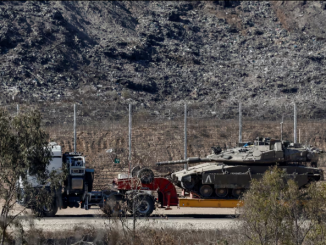
Indian security force personnel stand guard on the banks of Dal Lake, following a suspected militant attack near south Kashmir’s Pahalgam, in Srinagar, on Friday April 25, 2025. — REUTERS/Adnan Abidi
| Published April 25, 2025
Kashmir on Edge: Aftermath of the Pahalgam Attack and Rising India-Pakistan Tensions
In the wake of a devastating militant attack in Pahalgam, Kashmir, that claimed 26 civilian lives, the region stands at a critical juncture. The incident, one of the deadliest in nearly two decades, has intensified the already fraught relations between India and Pakistan, both nuclear-armed neighbors with a history of conflict over the disputed territory.
The Pahalgam Tragedy
On April 22, 2025, gunmen opened fire on a group of tourists in the meadows of Pahalgam, a popular destination in Indian-administered Kashmir. The attack resulted in the deaths of 26 men, marking a grim milestone in the region’s turbulent history. Indian authorities have identified three suspects, including two Pakistani nationals, and have demolished the homes of two suspected militants. The Indian Army has launched extensive search operations in the area, focusing on homes and forested regions near the attack site.
India has accused Pakistan of involvement in the attack, citing alleged “cross-border linkages,” a claim Islamabad firmly denies. In response to the incident, India suspended the Indus Waters Treaty, a critical water-sharing agreement, and Pakistan closed its airspace to Indian airlines. These retaliatory measures have further strained diplomatic ties and disrupted international travel.
The situation escalated with reports of Indian and Pakistani troops exchanging fire along the Line of Control (LoC) in Kashmir. While no casualties were reported, the skirmishes underscore the volatility of the region. The United Nations has urged both countries to exercise maximum restraint to prevent further deterioration of the situation.
Economic Repercussions
The geopolitical tensions have had immediate economic impacts. The Indian rupee weakened, closing 0.2% lower at 85.45 per U.S. dollar, amid investor concerns over potential armed conflict. Indian equity markets also declined, with the Nifty 50 Index dropping over 1%, significantly underperforming other Asian indices.
Security Measures and Future Outlook
In response to the attack, the Indian government is considering permanent deployment of Army and paramilitary forces in the region to address security gaps. A detailed review of security arrangements is underway, especially with the upcoming Amarnath Yatra, a significant pilgrimage scheduled to commence on July 3. The route to the Amarnath Shrine passes through Pahalgam, making enhanced security measures imperative.
As the region grapples with the aftermath of the Pahalgam attack, the international community watches closely, hoping for de-escalation and a return to dialogue between India and Pakistan. The path forward remains uncertain, with the potential for further conflict looming over the already tense landscape of Kashmir.
Conclusion
The aftermath of the Pahalgam attack has once again exposed the fragile peace in Kashmir and the deep-rooted tensions between India and Pakistan. While increased security measures and international calls for restraint offer a path toward stability, the situation remains volatile. Without meaningful dialogue and long-term conflict resolution, the region risks falling into a cycle of violence and retaliation that endangers civilian lives, regional peace, and economic progress. The need for responsible leadership, both domestically and diplomatically, has never been more urgent.





Be the first to comment